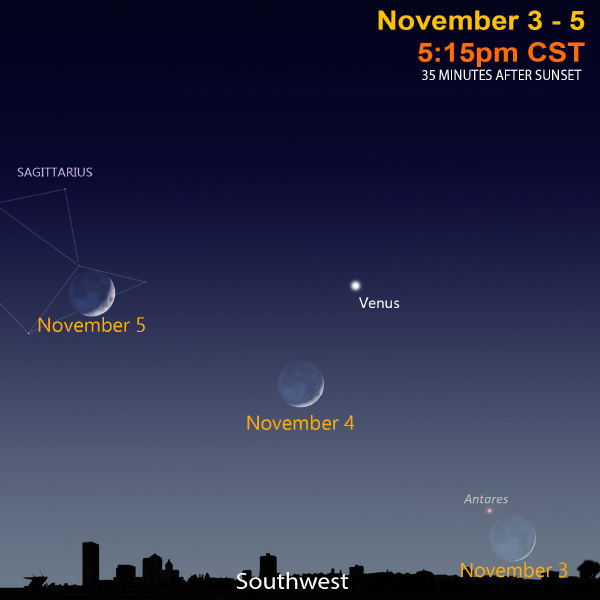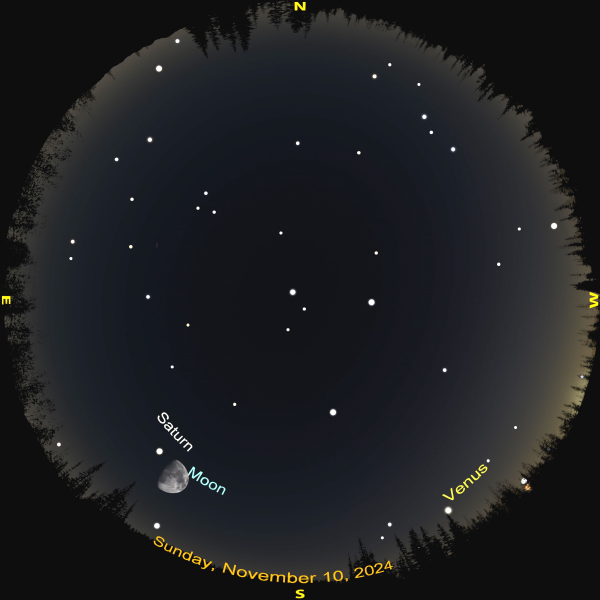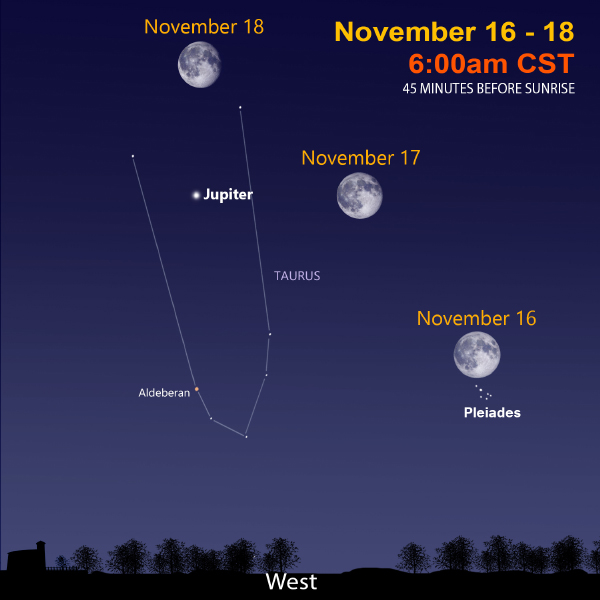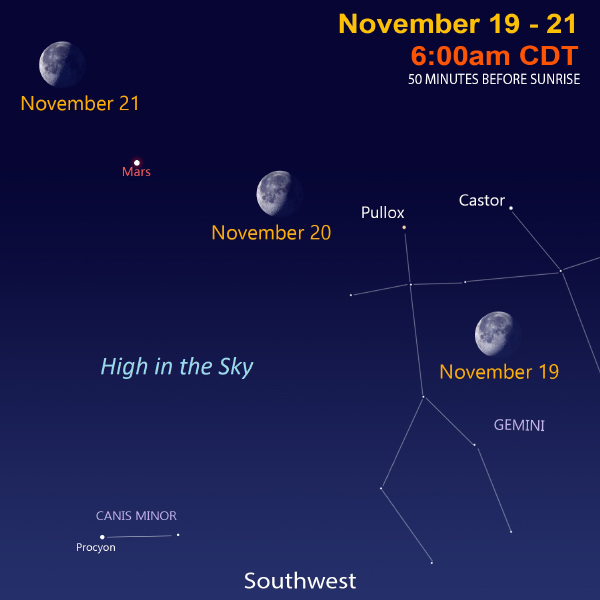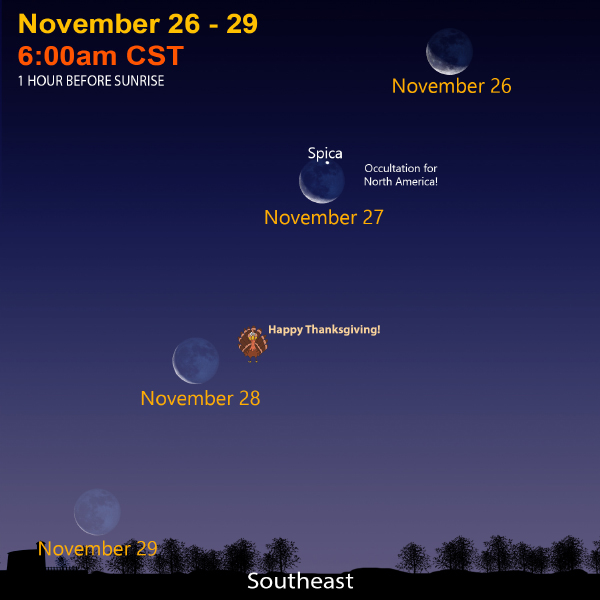Cosmic Curiosities
“A life spent in the routine of science need not destroy the
attractive human element of a woman's nature.”
- Annie Jump Canon, American Astronomer
Sky Surprises
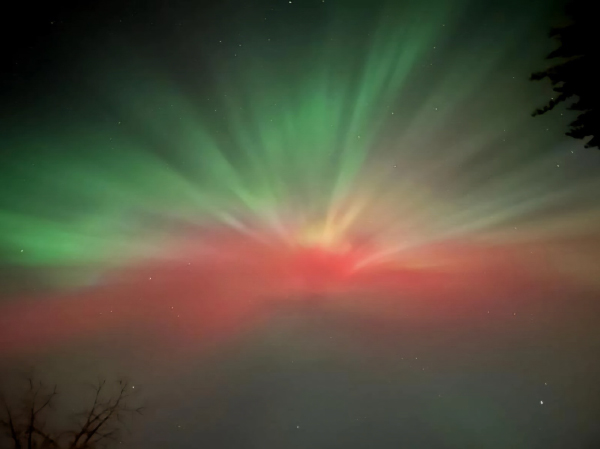
Credit: Rachel Solomon
Many stargazers witnessed two sky surprises in October. On Thursday night, October 9, the aurora lit up skies across many states. The electric displays were seen better in northern regions and in dark skies away from city lights.
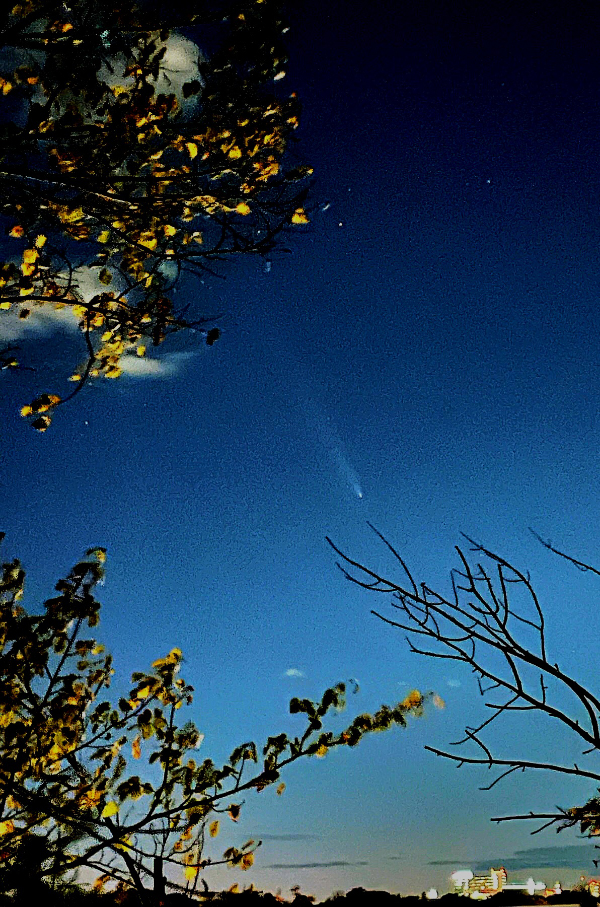
Credit: Bob Bonadurer
Soon after, in mid-October, sky observers could see Comet A3 Tsuchinshan–ATLAS. Though slightly visible with human eyes, it proved to be stunning in most smartphone cameras that take about a four-second exposure.
Exoplanets
It’s wild to realize that 30 years ago, we knew of zero exoplanets. Zip. Zilch.
Today, we have 5,780 confirmed exoplanets in 4,314 planetary systems, with 969 systems having more than one planet. The first new world orbiting around a sun-like star came in 1995 in the constellation Pegasus. They nicknamed it “hot Jupiter” because the planet was located very near the star with only a four-day orbit.
What about the next 30 years? How many exoplanets will we know of in 2054? Who knows, but my guess is at least 100,000.
What is the actual number of planets in the Milky Way galaxy? Many astronomers theorize that most stars have planets. So, say each of the 200 billion stars has on average five planets; then the total number of exoplanets in our galaxy is one trillion!
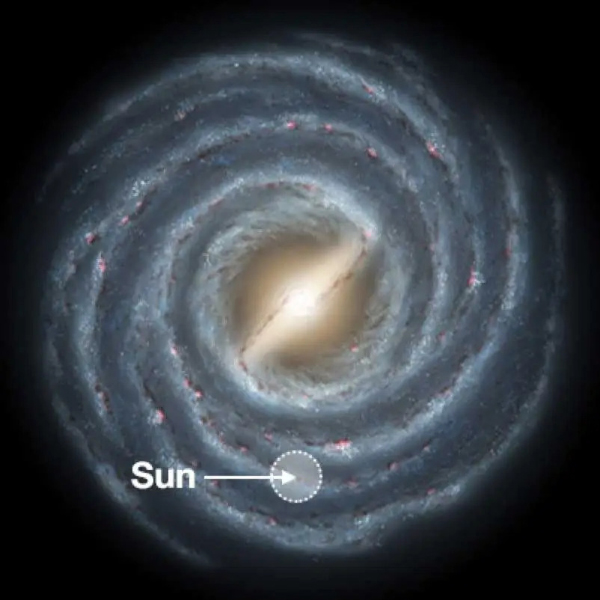
Credit: NASA
In NASA’s graphic above, the white circle indicates where we searched for exoplanets. That is a very tiny part of the Milky Way galaxy. The farthest exoplanet is about 2,000 lightyears away. And our galaxy is 100,000 lightyears wide! Still, this tiny region is huge compared to our Earthly experience with distance. One lightyear is almost 6,000,000,000,000 miles distant (that’s six trillion)! Traveling at five miles per second, our best spaceship today would take 70,000 years to get to the nearest exoplanet (Proxima Centauri b, about four lightyears away).
Planets are small and so far away that sophisticated telescopes never see them directly. They “see” the planets based on their effects on their parent star.
Exoplanet discoveries mainly come from the transit method. This is when astronomers observe a slight dimming of stars as their planets pass in front of them. If an alien civilization were observing our solar system in the same way we're searching other systems, they might see Jupiter barely reduce our sun’s light on a regular cycle.
Today, the landscape of exoplanet research is more thrilling than ever. Recent findings have focused heavily on identifying potentially habitable exoplanets. For instance, researchers have found Earth-sized planets in the habitable zones of their stars—regions where conditions might be just right for liquid water to exist. NASA’s TESS (Transiting Exoplanet Survey Satellite) is still going, after four years of finding planets. A few weeks ago, an astronomer in Spain led a collective effort to uncover a planet around the closest single star to the sun—Barnard’s star—only six lightyears from our solar system.
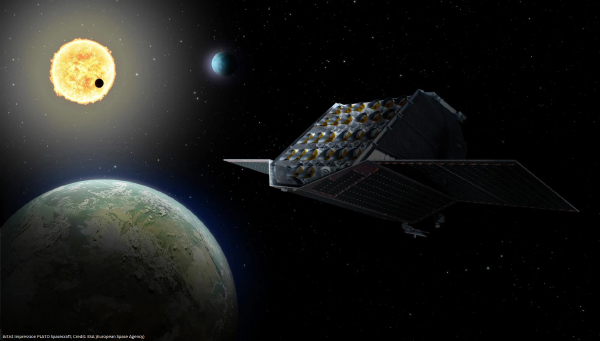
The next big exoplanet mission is from Europe and is set to launch in 2026. It’s called PLATO, from PLATO, or PLAnetary Transits and Oscillations. This space telescope’s goal is to search for exoplanets around stars similar to the sun and at orbital periods long enough for them to be in the habitable zone—a place where liquid water might exist.
Mini-Moon
You may have heard Earth has a new moon! Well, it’s true—but only for a few months.
Asteroid 2024 PT5 is a Near-Earth Object (NEO) discovered by the South African telescope of NASA’s Asteroid Terrestrial-impact Last Alert System (ATLAS) on August 7, 2024. It's estimated to be about 33 feet (10 meters) wide and is not a hazard to our planet. 2024 PT5 wandered in from the Arjuna asteroid belt. This is a secondary belt made of NEOs orbiting the sun at a similar distance to our planet, approximately 93 million miles away.

There are many rock groups, or asteroid belts, in our solar system. The diagram above reveals rocks out to Jupiter. The main asteroid belt is white. Other belts called the Trojans, Greeks, and Hildas are marked in green and orange. Harder to spot are the NEOs in red. A new NEO can enter Earth’s neighborhood when gravity from another planet or asteroid alters their course. There are estimated to be more than 35,000 NEOs!
While most are harmless, some are possibly hazardous, such as the famous asteroid Apophis, discovered in 2004, estimated to be 1,100 feet (335 meters) across. While scientists were concerned of possible collisions in 2029 and 2068, reassessments of Apophis’s orbit via precise radar observations have allowed experts to rule out any risk of impact for at least the next century.
After successfully sampling asteroid Bennu in September 2023, NASA’s OSIRIS-REx mission was renamed OSIRIS-APophis EXplorer (OSIRIS-APEX) and sent off to study Apophis as it nears by 2029.
Psyche is another interesting object in the main asteroid belt. Shaped like a squished oval, it's approximately 173 miles across at its widest point and 144 miles long, one of the largest M-type asteroids. It's theorized that Psyche may hold significant amounts of metal from the core of a planetesimal, an early solar system object, making the asteroid an incredibly important place of scientific study. Like Apophis, NASA launched the Psyche mission in October 2023 and will arrive in August 2029 after a 2026 gravity assist from Mars.
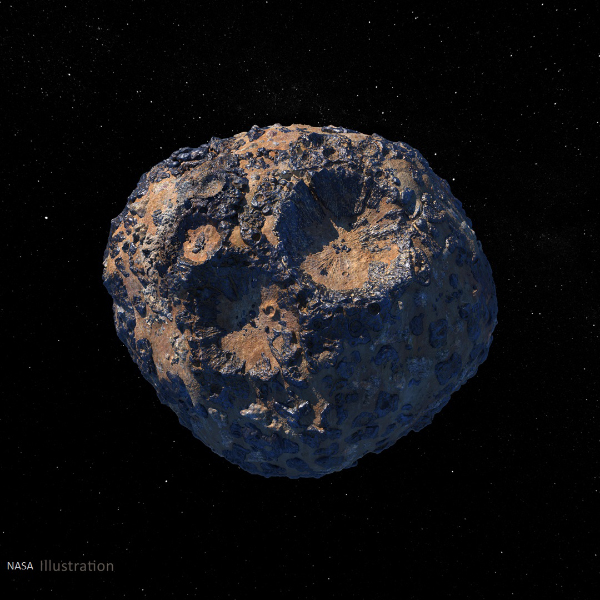
Psyche based on radar and optical observations; Credit: NASA
According to NASA, 2024 PT5 will follow us as a “distant companion” for just a few months. It will not be captured by Earth’s gravity, and therefore won't become a permanent “mini-moon.”
Credit: NASA
Short mini-moon events are relatively common. Several have taken place in the last 10 years. 2024 PT5 will lose its title as Earth’s mini-moon this November. And no, sorry, our new mini-moon is not visible to the average stargazer, being far too small and faint to see with the naked eye.
Another Sneak Preview
We continue working on our new program, The Artistic Universe. Our latest endeavor was filming staged reenactments from the theater play Silent Sky. The play takes viewers back in time, more than 100 years ago, to a group of women who revolutionized astronomy with amazing discoveries at Harvard University.
Henrietta Leavitt figured out the period-luminosity relationship for Cepheid variable stars, allowing us to know distances to faraway stars.
Annie Jump Canon discovered 300 variable stars and five novae. She also classified the stars by temperature and created the spectral classes O B A F G K M.
Enjoy our little sneak preview! The program will open in the spring of 2025.
Space in Sixty Seconds
Tour the November sky, and see if aliens are out there!
Sky Sights
The crescent Moon orbits by Venus on November 3 through 5.
Saturn and the Moon are close from November 9 through 11—and very close November 10!
Jupiter rises at about 8 p.m. at November’s start and at 5 p.m. by the end of the month. Watch the Moon near the king planet from November 16 through 18. The full moon is the night of November 15.
Mars rises at about 11 p.m. at November’s start and at 8:30 p.m. by the end of the month. The Moon nears the red planet from November 20 and 21.
Mercury might be visible in the late November sky in the early evening but very difficult to spot without binoculars.
Thanksgiving night marks the return of brilliant Orion. Look for this winter constellation around 8 p.m. in the eastern sky. On November 27, the Moon will occult (eclipse) the bright star Spica.
November Star Map
Sign Up
Receive this newsletter via email!
Subscribe
See the Universe through a telescope
Join one of the Milwaukee-area astronomy clubs and spot craters on the Moon, the rings of Saturn, the moons of Jupiter, and much more.
Follow Bob on social media
Twitter: @MPMPlanetarium
Facebook: Daniel M. Soref Planetarium


